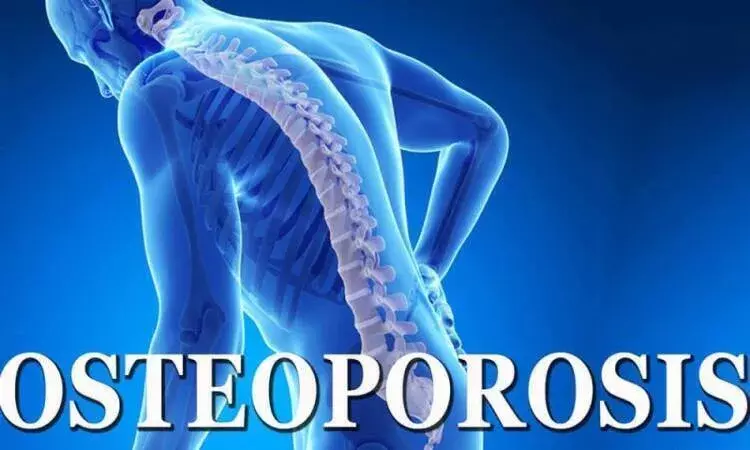- Home
- Medical news & Guidelines
- Anesthesiology
- Cardiology and CTVS
- Critical Care
- Dentistry
- Dermatology
- Diabetes and Endocrinology
- ENT
- Gastroenterology
- Medicine
- Nephrology
- Neurology
- Obstretics-Gynaecology
- Oncology
- Ophthalmology
- Orthopaedics
- Pediatrics-Neonatology
- Psychiatry
- Pulmonology
- Radiology
- Surgery
- Urology
- Laboratory Medicine
- Diet
- Nursing
- Paramedical
- Physiotherapy
- Health news
- Fact Check
- Bone Health Fact Check
- Brain Health Fact Check
- Cancer Related Fact Check
- Child Care Fact Check
- Dental and oral health fact check
- Diabetes and metabolic health fact check
- Diet and Nutrition Fact Check
- Eye and ENT Care Fact Check
- Fitness fact check
- Gut health fact check
- Heart health fact check
- Kidney health fact check
- Medical education fact check
- Men's health fact check
- Respiratory fact check
- Skin and hair care fact check
- Vaccine and Immunization fact check
- Women's health fact check
- AYUSH
- State News
- Andaman and Nicobar Islands
- Andhra Pradesh
- Arunachal Pradesh
- Assam
- Bihar
- Chandigarh
- Chattisgarh
- Dadra and Nagar Haveli
- Daman and Diu
- Delhi
- Goa
- Gujarat
- Haryana
- Himachal Pradesh
- Jammu & Kashmir
- Jharkhand
- Karnataka
- Kerala
- Ladakh
- Lakshadweep
- Madhya Pradesh
- Maharashtra
- Manipur
- Meghalaya
- Mizoram
- Nagaland
- Odisha
- Puducherry
- Punjab
- Rajasthan
- Sikkim
- Tamil Nadu
- Telangana
- Tripura
- Uttar Pradesh
- Uttrakhand
- West Bengal
- Medical Education
- Industry
Vertebral fracture assessment useful predictor of osteoporosis in postmenopausal women

Bangkok, Thailand: Tanawat Amphansap et al conducted a study to compare bone mineral density (BMD) in Thai postmenopausal women with and without distal radius fracture, and to investigate the role of vertebral fracture assessment (VFA) in diagnosing osteoporosis after distal radius fracture.
The cross-sectional study was conducted in Thai postmenopausal women with and without distal radius fracture.
The researchers found that vertebral fracture assessment helped diagnose osteoporosis in postmenopausal women in both fracture and non-fracture groups.
A venous blood specimen was obtained and sent for complete blood count (CBC), blood urea nitrogen (BUN), serum creatinine (Cr), calcium, phosphate, albumin, total alkaline phosphatase, 25-hydroxy vitamin D level, and intact parathyroid hormone level 2 weeks after the fracture occurred. The BMD T-scores of the femoral neck (FN), total hip (TH) and lumbar spine (LS) were obtained from dual energy X-ray absorptiometry (DXA) scan performed within 2 weeks of fracture with reference values adapted for the Thai population. All measurements were done in accordance with the recommendations from the International Society for Clinical Densitometry (ISCD) by a single certified densitometer technologist. The DXA was calibrated by the manufacturer and daily quality check was performed.
The technologist regularly performed an in vivo precision assessment. VFA was also performed in the same session, using the same DXA model. A vertebral compression fracture (VCF) was defined as a collapse of more than 25% of vertebral body height. When scoliosis was present, an X-ray of the spine was requested to detect VCF.
BMD were compared between groups. Participants were classified into osteoporosis, osteopenia or normal using BMD alone, and BMD plus VFA, where a mere presence of vertebral compression fracture indicated osteoporosis.
It was found that
• Fifty postmenopausal women with distal radius fractures and 111 non-fracture postmenopausal women participated in the study.
•The mean BMD was significantly lower at all sites in the fracture group (FN BMD 0.590 ± 0.075 vs 0.671 ± 0.090, p ¼ 0.007; TH BMD 0.742 ± 0.103 vs 0.828 ± 0.116, P ¼ 0.009; LS BMD 0.799 ± 0.107 vs 0.890 ± 0.111, P ¼ 0.009 in the fracture vs non-fracture group respectively).
• Among 50 postmenopausal women in the fracture group, there were 16 (32%) osteoporosis, 32 (64%) osteopenia, and 2 (4%) normal patients. In the non-fracture group, 7 (6.31%), 69 (62.16%), and 35 (31.53%) were classified as osteoporosis, osteopenia, and normal, respectively
• VFA increased the prevalence of osteoporosis from 16 (32%) to 23 (46%) in the fracture group, and 7 (6.31%) to 17 (16.22%) in the non-fracture group, with a number needed to treat 9.
The authors concluded that - Postmenopausal women with distal radius fractures had lower BMD. Incorporating VFA into diagnosis of osteoporosis increased the prevalence of osteoporosis in both fracture and non-fracture groups. Postmenopausal women aged 50 years or older with distal radius fracture are a good target for the investigation of osteoporosis.
Further reading:
Comparison of bone mineral density and vertebral fracture assessment in postmenopausal women with and without distal radius fractures
Tanawat Amphansap, Chayaphong Rattanaphonglekha, Jaruwat Vechasilp, Nitirat Stitkitti, Kamonchalat Apiromyanont, Atiporn Therdyothin.
Osteoporosis and Sarcopenia 7 (2021) 134- 139
https://doi.org/10.1016/j.afos.2021.11.004
MBBS, Dip. Ortho, DNB ortho, MNAMS
Dr Supreeth D R (MBBS, Dip. Ortho, DNB ortho, MNAMS) is a practicing orthopedician with interest in medical research and publishing articles. He completed MBBS from mysore medical college, dip ortho from Trivandrum medical college and sec. DNB from Manipal Hospital, Bengaluru. He has expirence of 7years in the field of orthopedics. He has presented scientific papers & posters in various state, national and international conferences. His interest in writing articles lead the way to join medical dialogues. He can be contacted at editorial@medicaldialogues.in.
Dr Kamal Kant Kohli-MBBS, DTCD- a chest specialist with more than 30 years of practice and a flair for writing clinical articles, Dr Kamal Kant Kohli joined Medical Dialogues as a Chief Editor of Medical News. Besides writing articles, as an editor, he proofreads and verifies all the medical content published on Medical Dialogues including those coming from journals, studies,medical conferences,guidelines etc. Email: drkohli@medicaldialogues.in. Contact no. 011-43720751


